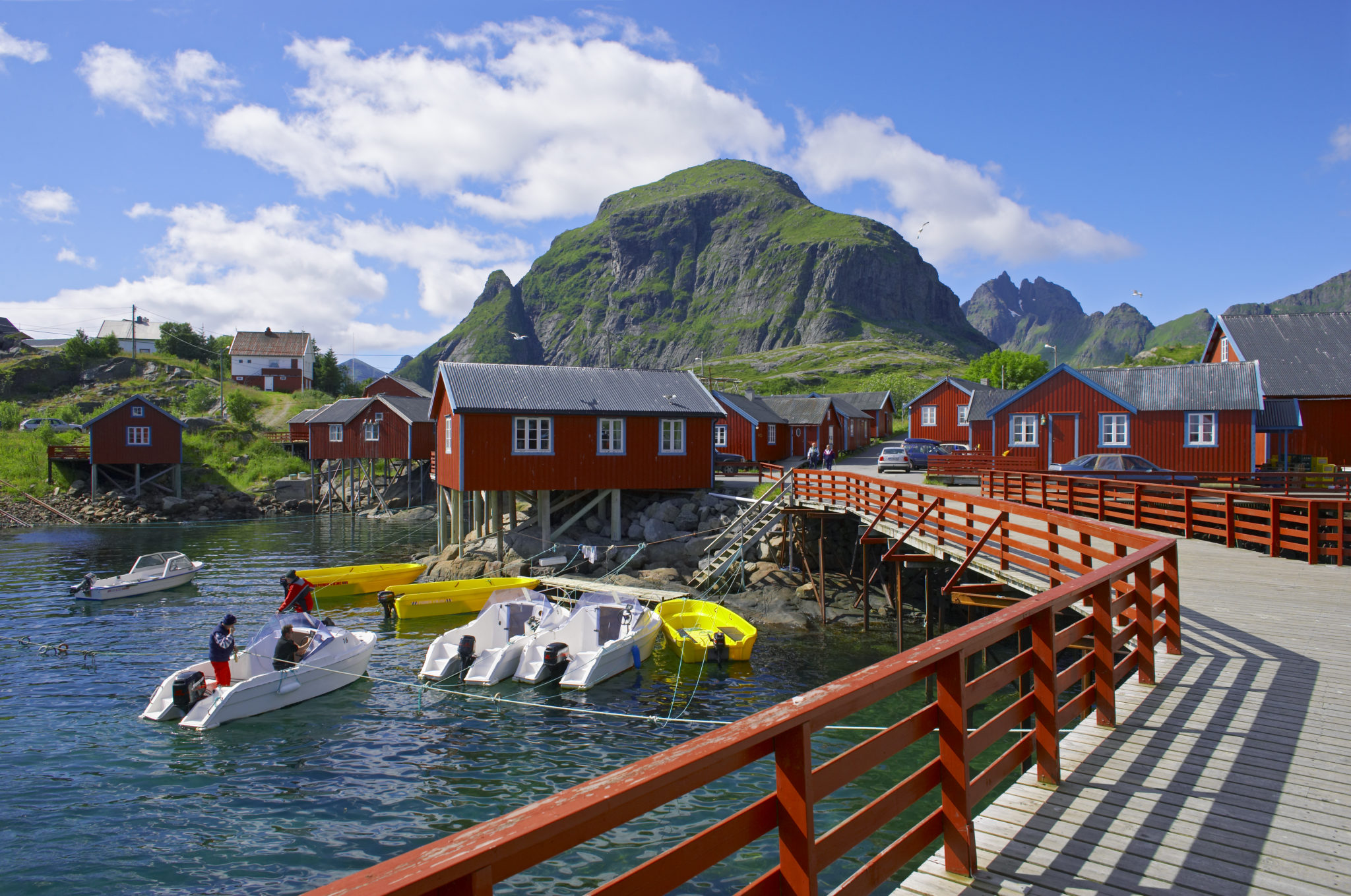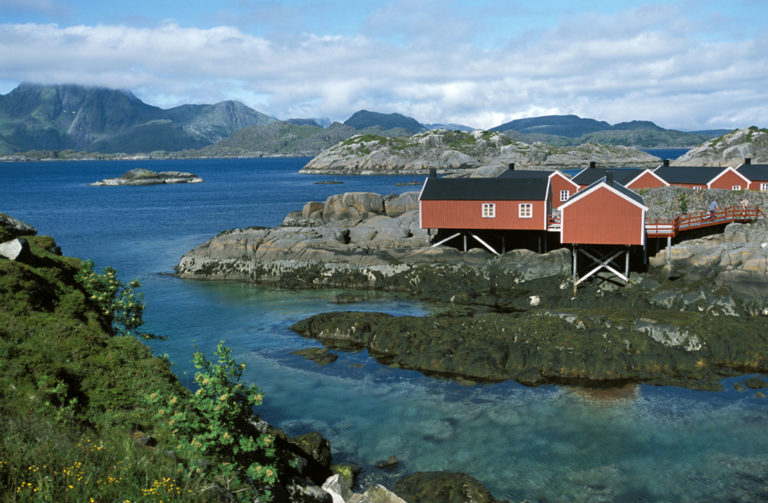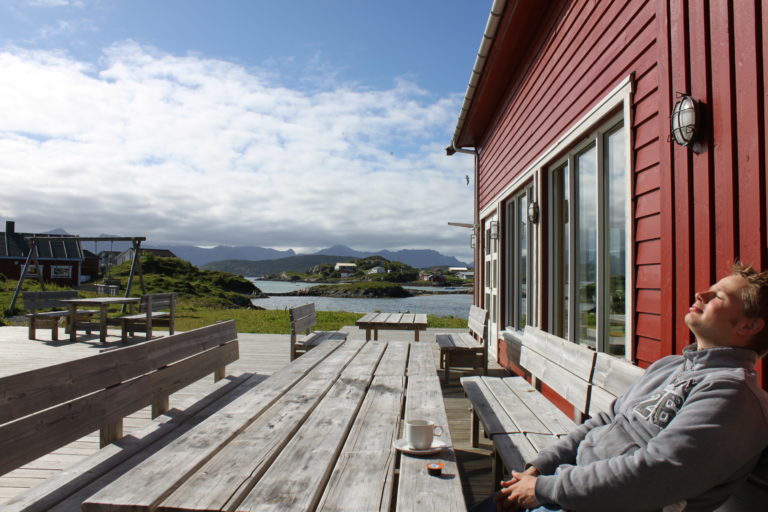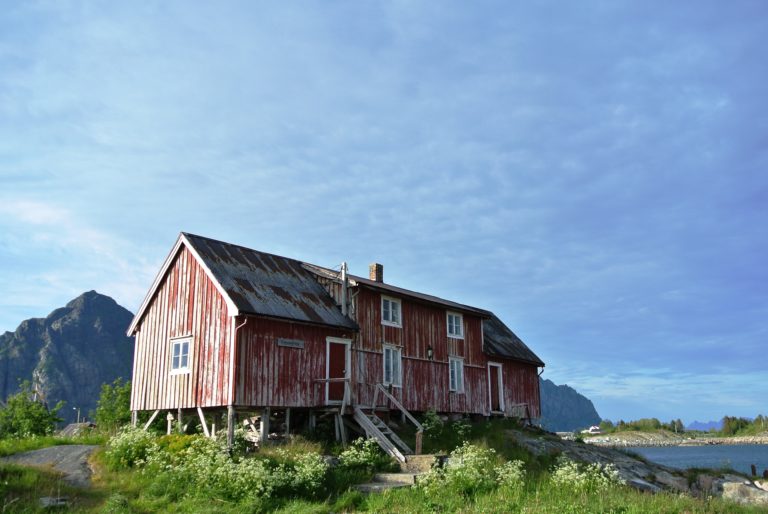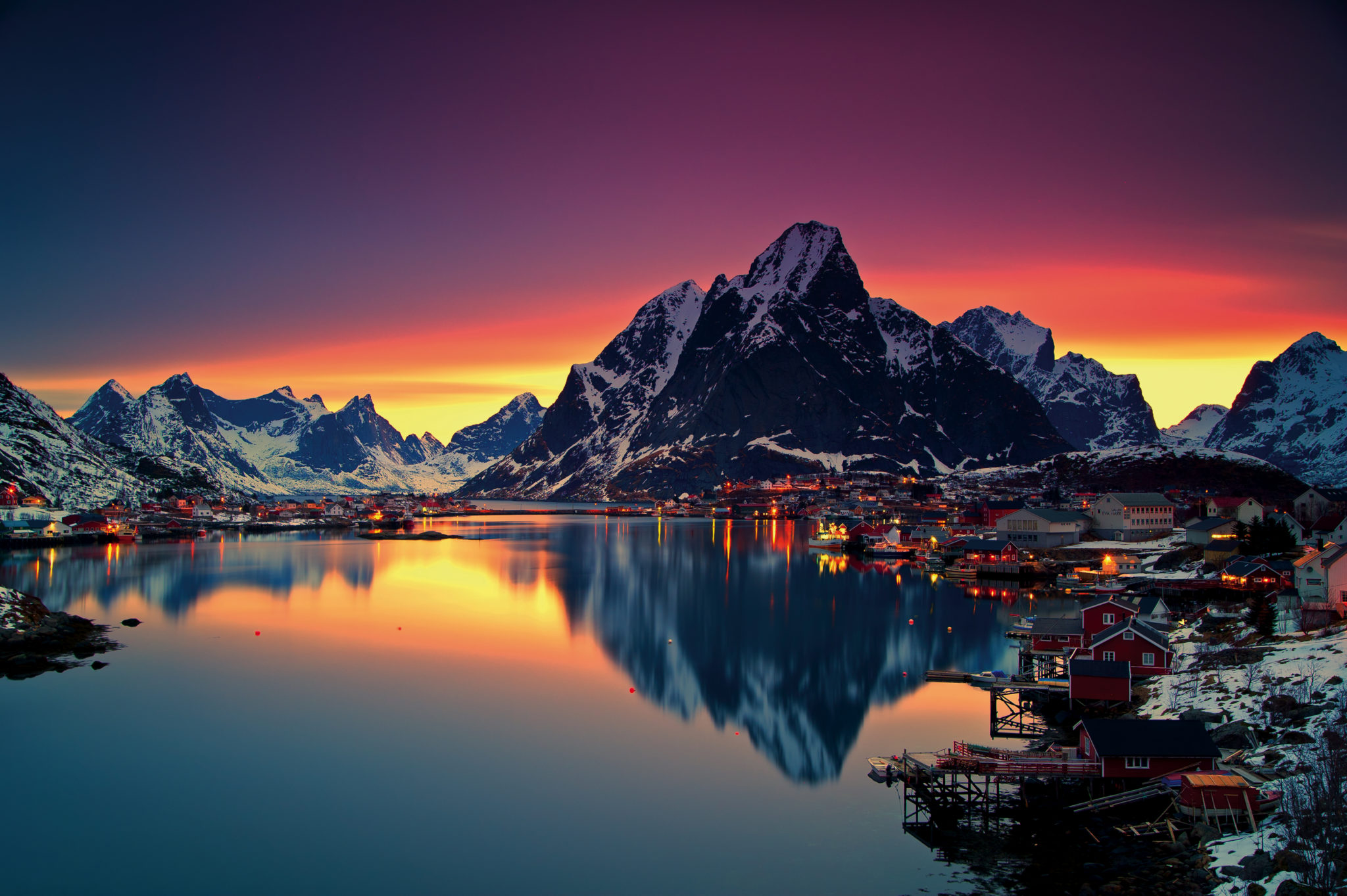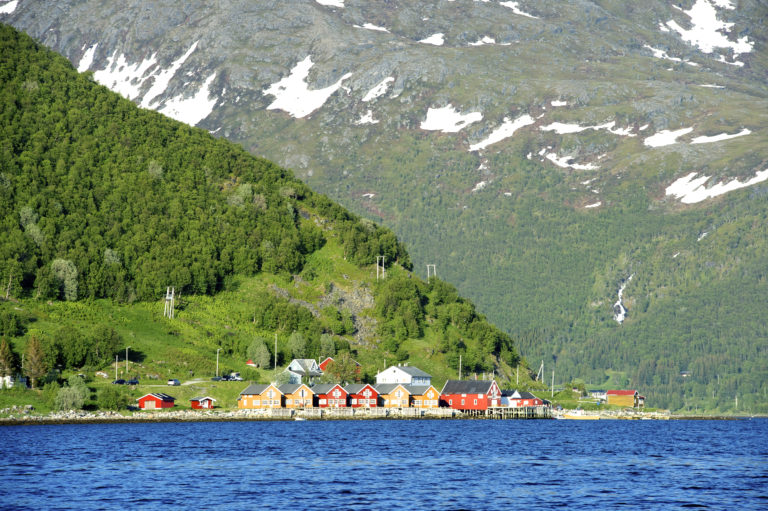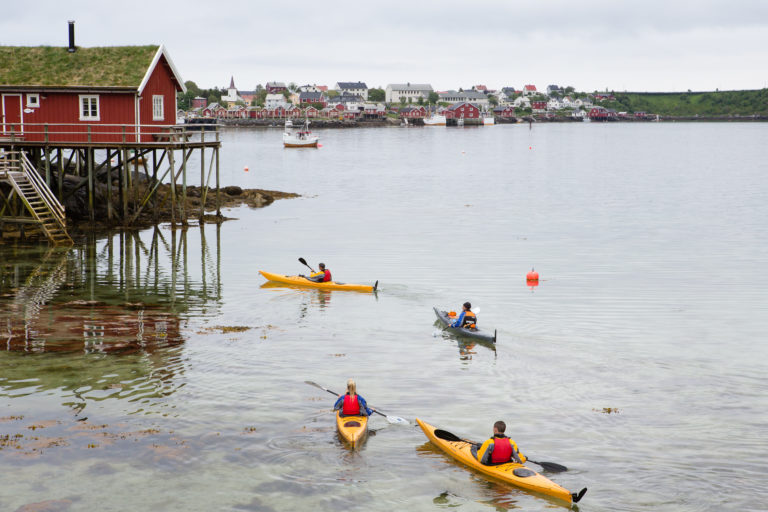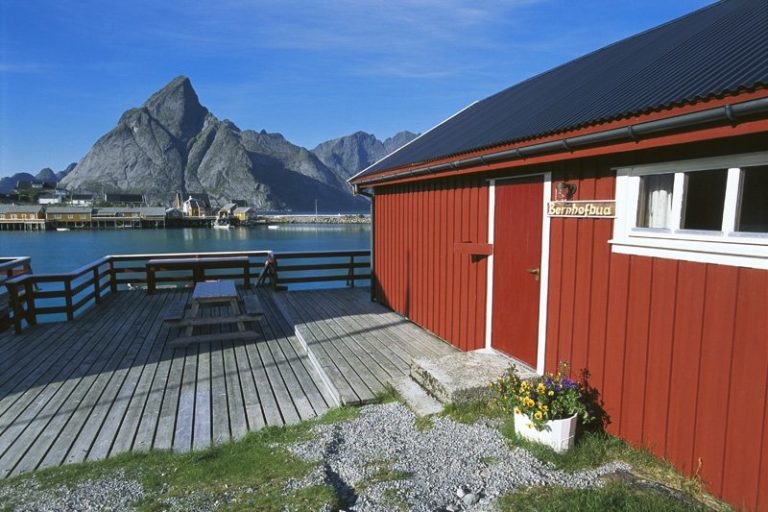The distinctive Rorbu cabins are one of the features of the Nordland coastline and particular to Lofoten. The cabins were originally basic accommodation for the Lofoten fishermen, built on poles partly out in the water. Today, there are Rorbu cabins in a range of categories, from basic to high standard.
The first Rorbu cabins in Lofoten were commissioned by King Øystein in 1120 as housing for the fishermen during the Lofoten fishing season. The cabins were simple structures, built on poles partly out in the sea and usually comprising two rooms: a storage room and a living room with beds. The storage room was used to store food and fishing equipment, and for preparations for a new day on the waters around Lofoten. Today, there are Rorbu cabins in a range of categories, from basic to high standard.
Rorbu cabins were of Royal decree
Even before 900 AD, the sagas mentioned boats being equipped along the coast to travel to Lofoten to participate in the winter season of fishing for cod. In addition to the usual near-shore fishing, many tales were told of this particularly valuable winter fishing among the Lofoten islands. People travelled for days and weeks in their open rowing and sailing boats to participate in the rich Lofoten fishing throughout the winter.
This naturally gave rise to a need for accommodation. We know little about how this was dealt with in the earliest years, but the sagas relate that in the early 1100s, King Øystein decreed that cabins were to be built in Kabelvåg, the old Vågar – for the fishermen who travelled to Lofoten. This is a clear indication of how important fishing was to the country’s economy at that time.
The name RORBU comes from old Norwegian
Where does this word come from? BU is a Norwegian word for a (little) house, and has clear links to the verb “bo”, to live. So it seems that the name refers to a small house to live in, but “bu” is also used in other contexts such as “redskabpsbu”, which is the Norwegian word for a shack where tools are kept.
The first part of the word RORBU stems from the Norwegian word “Ro”, to row. For centuries, fishermen travelled to the area in their rowing boats – it was not until the nineteenth century that motors were added to fishing boats. In the early years, then, people literally “rowed fish”. Even after three generations of motorboats, the Norwegian still speak of “ro fiske” (row fish) to refer to participating in a fishing expedition. So it seems likely that “Rorbu” means “the house where fishermen lived while they rowed fish”.
Rorbu cabins were built along the caostline
The Rorbu cabins were originally built right down on the shoreline, often on poles in the water, with natural access to the rowing boats right next to the cabin. Many fishing villages gradually became densely built-up, with the red cabins – and fish processing buildings – dominating the townscape. Red fish-oil paint was the cheapest and most commonly used paint, but a different colour – ochre – gradually gained in popularity. The Rorbu cabins and the large number of racks for drying the fish create a special environment in the fishing villages of Lofoten.
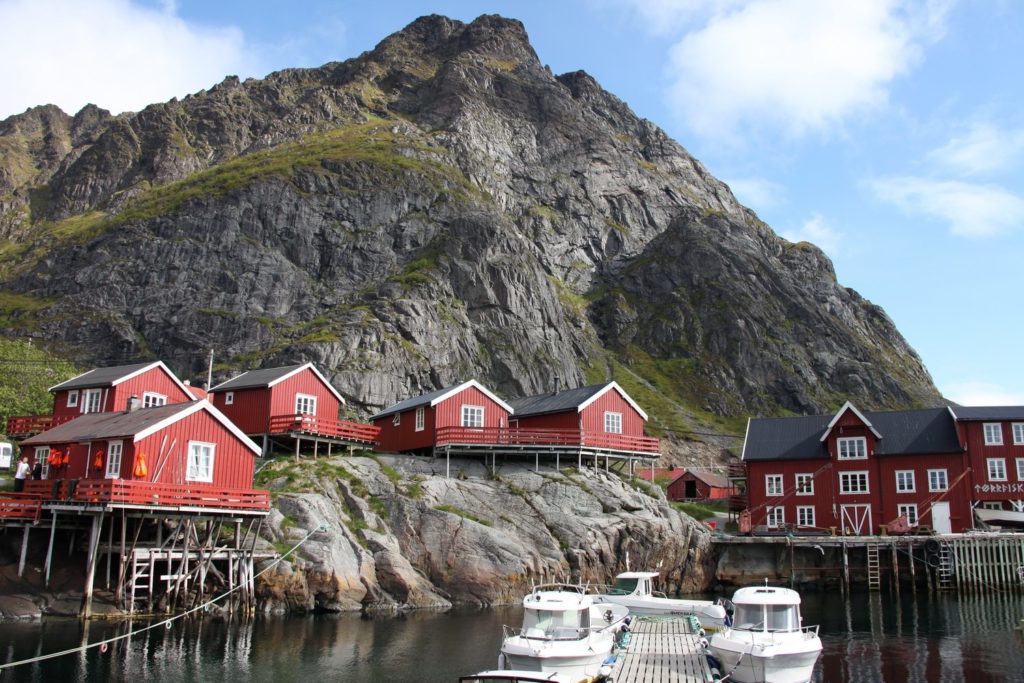
In recent years, the term “Rorbu cabin” has been used to refer to houses and cabins located elsewhere than in Lofoten, but the story of authentic “Rorbu cabins” is still closely linked to Lofoten. Many of the Rorbu cabins you can stay in today are the genuine article, even though they have been renovated to provide the comforts that travellers expect today.
